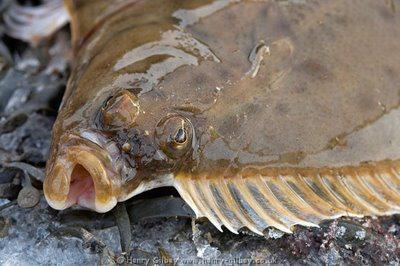
Fishing for winter flounder can be tons of fun. They may not present the challenge of steelhead fishing, or put up the kind of fight you can expect from a striped bass, but winter flounder fishing is a fun way to spend an afternoon at the beach or on the dock. Don’t let the name of these groundfish fool you either! Winter flounder can be found close to shore well into late spring and early summer, even if it is in lower numbers than the winter months.
This post uses amazon affiliate links. I receive commission from any sales at no additional cost to yourself.
Winter flounder fishing from shore is easy, and doesn’t require much in the way of equipment. This makes them a good fish to teach someone new how to fish (like your kids, girlfriend/boyfriend, spouse, or friend). It’s one of the few species I can consistently convince my fiancee to come out and fish with me for, because we both know we are going to catch something! Let me share some fishing tips with you to help you be successful in catching these often overlooked flatfish.
My Favourite Winter Flounder Rig.
Winter flounder have extremely tiny mouths for their size, so the most effective winter flounder rigs will use a hook with a small hook gap. I most often fish for winter flounder using small home tied saltwater bucktail jigs tipped with 1.5″ (4cm) Berkley Gulp Alive jigging grubs when fishing winter flounder. Shad darts are the perfect sized bucktail jigs for winter flounder if you’d rather buy them then tie them yourself.
Yellow, white, or chartreuse are all colours that produce well when fishing for winter flounder. Yellow or chartreuse is better used in off coloured water or on cloudy days. White is a good choice in clear water or on bright sunny days. Honestly though, these fish are not nearly as picky as many other species, your goal is basically to use a lure that will get noticed. It can draw attention either by colour, sound, flash, scent, or any combination of these factors. I do find a big increase in bites when using scented lures though, so I do really recommend using them.
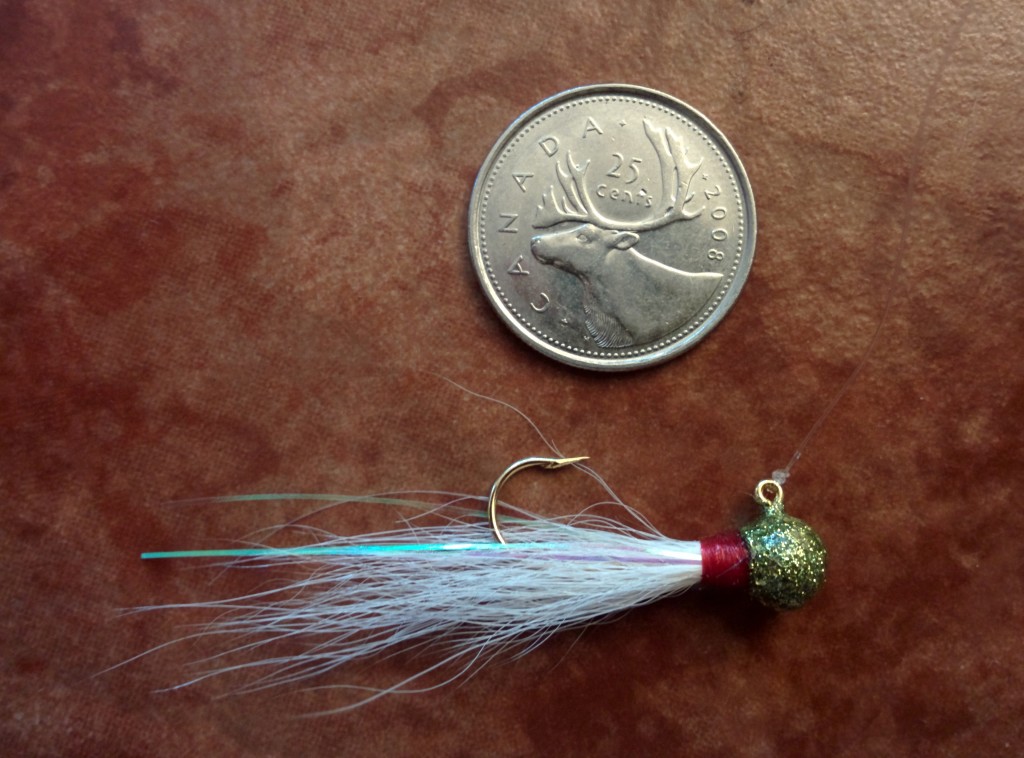
The small size of the bucktail jigs used for winter flounder rigs often means that they are not heavy enough on their own. The exception is if you are fishing from shore in very shallow water, or water with very little current. Usually though, they need a bit of help to to stay deep enough, so I usually add an egg weight above the jig. I also include two brightly coloured Lindy Beads (yellow, chartreuse, or gold) between the egg weight and the bucktail jig. The Lindy Beads serve several purposes:
- They are yellow/chartreuse/gold and shiny, attracting the attention of flounder. Flounder love bright colours!
- They create a small clicking noise when the rig is vertically jigged, piquing the interest of curious flounder.
- They help protect the terminal knot from being smashed and weakened by the heavy egg weight, reducing the chance of a break off.
Even though additional weight is often needed, I do like to keep the rig as light as possible. Keeping the flounder rig light helps aid in detecting bites. The use of braided line will also help you feel when you have a bite, as braided line doesn’t stretch like mono or fluorocarbon does.
Berkley Gulp! Alive! Jigging Grub (Amazon Link) Can be bought here.
Shad Darts (Amazon Link) Can be bought here.
Lindy Beads (Amazon Link) Can be bought here.
I actually tied these bucktail jigs on jigheads intended for fly fishing. Wapsi jigheads in sizes 1/32, 1/16. and 1/8 are all good choices. I get the gold coloured ones if available, but it cab be fun to paint them yourself (like the bucktail jig pictured below). If painted the jigheads, i prefer to use nail polish rather than actual paint.
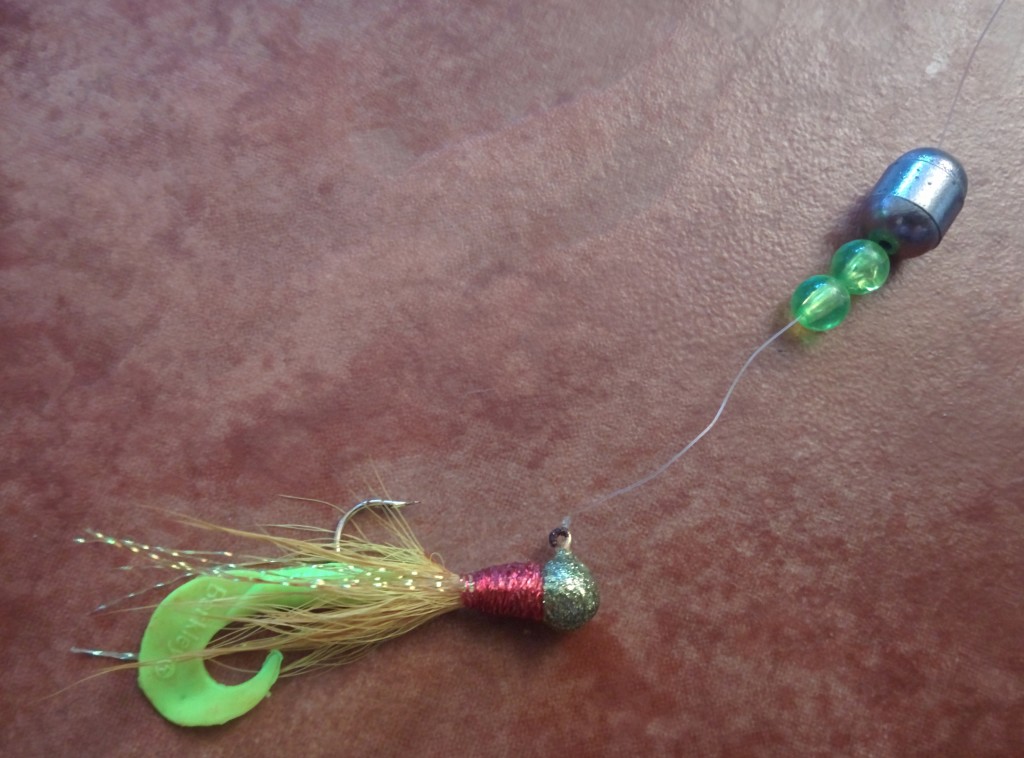
How to Fish this Rig
You can fish this rig right off a dock, wharf or other structure on shore. Just drop it directly in front of you and bounce it up and down. flounder sit on the bottom looking up, so you want to be bouncing the rig about a half foot to a foot above the bottom.
There is an easy way to tell if you are fishing at the right depth, let the jig sink until the line goes slack, at this point you know you are on the bottom. Raise or reel in the line a until it’s tight again, and then raise another foot to a foot and a half and you are in the strike zone! You can continually check what depth your at by occasionally letting the lure hit the bottom to gauge the current water depth. This is useful when covering ground (such as walking along a long pier or wharf) or when fishing in areas with fast changing tides.
Walk up and down the dock jigging the lure in this way, pausing every once in a while to give the sometimes slow striking flounder a chance to bite. It actually sometimes pays to stop in a location and bounce the jig for a minute or two. Often this will convince a flounder to strike that has been lazily following your jig, and wasn’t energetic enough to commit to actually striking at a moving jig.
You can also cast out and bounce the jig about a foot above the bottom as your retrieve it. You will cover more ground this way, but winter flounder are nowhere near as effective as catching a moving lure as their summer flounder relatives are, so take it slow.
Other Winter Flounder Fishing Methods
A alternate method of winter flounder fishing is to use a hook with a long hook shank and a small hook gap such as the one pictured below. Another very effective flounder fishing lure is a soft plastic Berkley shrimp, which just happen to fit perfectly on these long hooks. The Berkley shrimps also fit well on larger bucktail jigs for summer flounder, and as a bonus are also deadly for target sea run brook trout.
Berkley Gulp! Alive! Shrimp (Amazon Link) Can be bought here.
The problem with these long shanked hooks is that half the time the flounder swallow the bait, and it can be extremely difficult to remove the hook, which isn’t to big of a deal if you’re retaining the flounder, but makes successful release of undersized flounder that much more difficult. This is the primary reason I prefer to use a small bucktail jig for flounder, because they tend to hook in the lip of the flounder, rather than down it’s throat.
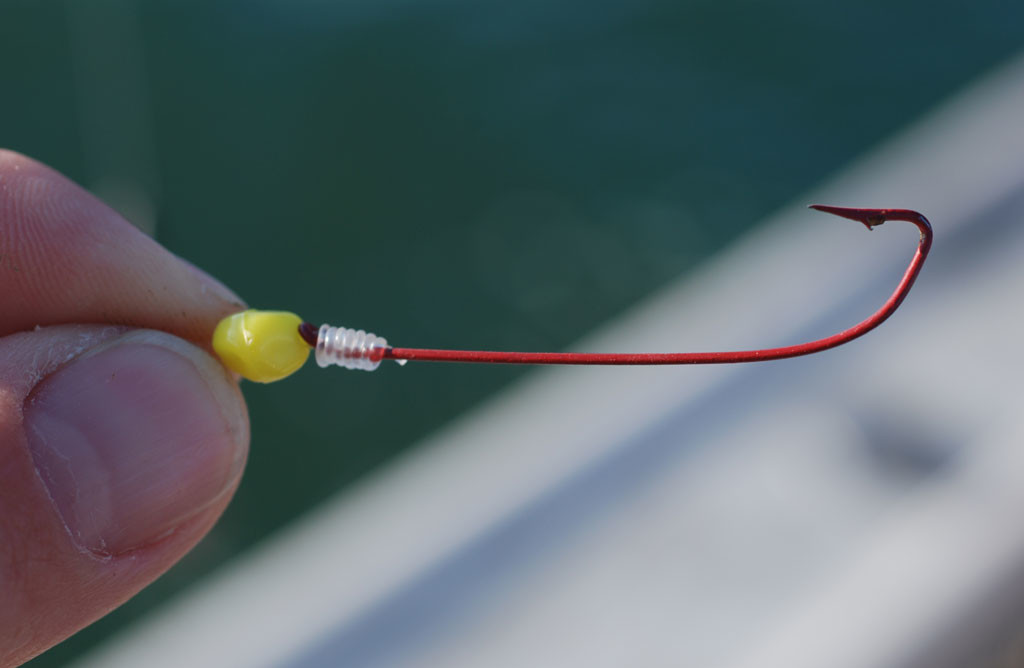
another effective method is to set up a drop shot rig. You can rig the hook with either scented plastics or real bait. The weight of a drop shot rig sits on the bottom, allowing the hook and bait to sit just a foot or so off the sea floor (right in the strike zone!). This method is commonly used by bait angers employing the sit and wait method. Cast this rig out, and wait for a bit.
The issue I have with using real bait, is that there is often many bait stealing critters in the same water as flounder. Crabs are notorious bait stealers, are cunners (often called sea perch) and to a lesser extent mummichogs. Crabs can easily rip bait off a hook with their claws, while cunners have sharp teeth that also quickly shred any real bait off the hook.
It’s this reason that I prefer to use soft plastics. They can still be tore up by teeth and claws, but not nearly as quickly as real bait. I’ve also not found real bait to be any more effective at catching flounder than good quality scented plastics.
Regardless of how you fish for these groundfish, winter flounder makes excellent table fare! You can get four fillets off of them, two on each side. Fry them up in a frying pan with lemon or lemon based spices and they are delicious!
Where to fish for Winter Flounder?
Like many fish, winter flounder often associate with structure, current and bait. The best spot to find winter flounder is somewhere tidally influenced where they have some shelter. Shelter can take the form of logs or docks, but can also be more subtle, such as a drop off in depth.
Flounder do really like changes in depth, so are likely to hang around just under drop offs, or by sand bars. Other pieces of structure to look for are docks, piers, wharfs, and sea grass beds. They do not tend to associate with rocky bottoms, but can be found there in certain conditions.
The best spot I found for winter flounder was an old dock that ran parallel to a channel cut out for boat traffic. The channel had lots of current due to the tides, which carried plenty of food in and out twice a day. It also dropped off in depth nicely on either side.
Flounder can be found in water as shallow as a foot or so, but are usually in water four feet deep or more. There are plenty of osprey and eagles in our area that frequently prey on flounder, so they tend to stay out of the super shallow water. Especially on a bright sunny day in clear water.
When to fish for Winter Flounder?
I’ve successfully caught winter flounder throughout the groundfish fishing season (spring to fall, check your local regulations). The most productive time has to be spring though, when they come even further inshore to breed.
Breeding season typically occurs in late April and last a few weeks. Large numbers of winter flounder come into the mouths of rivers (where it’s still brackish and they drain into the ocean) or very back end of bays to breed. If you’re really lucky, they can be so dense that they stack on top of one another fighting to bit your bait.
After this short breeding window, they disperse. They can then be found for the remainder of the fishing season in their usual places.
Whats the difference between Yellowtail Flounder and Winter Flounder?
This is a common question as both flounder species are often found in the same area. The winter flounder is a inshore fish and can often be found just feet away from the beach, or right under a pier. Yellowtail flounder live further out and deeper usually around 40 to 70 meters deep, but do occasionally move closer to shore. This site has a good picture showing the difference between winter flounder and yellowtail flounder. The mouth protrudes more on the Yellowtail flounder and it has more pronounced spotting on its back.
If you’re fishing from shore, you’re likely catching winter flounder, if you’re out on the boat it could be either one.

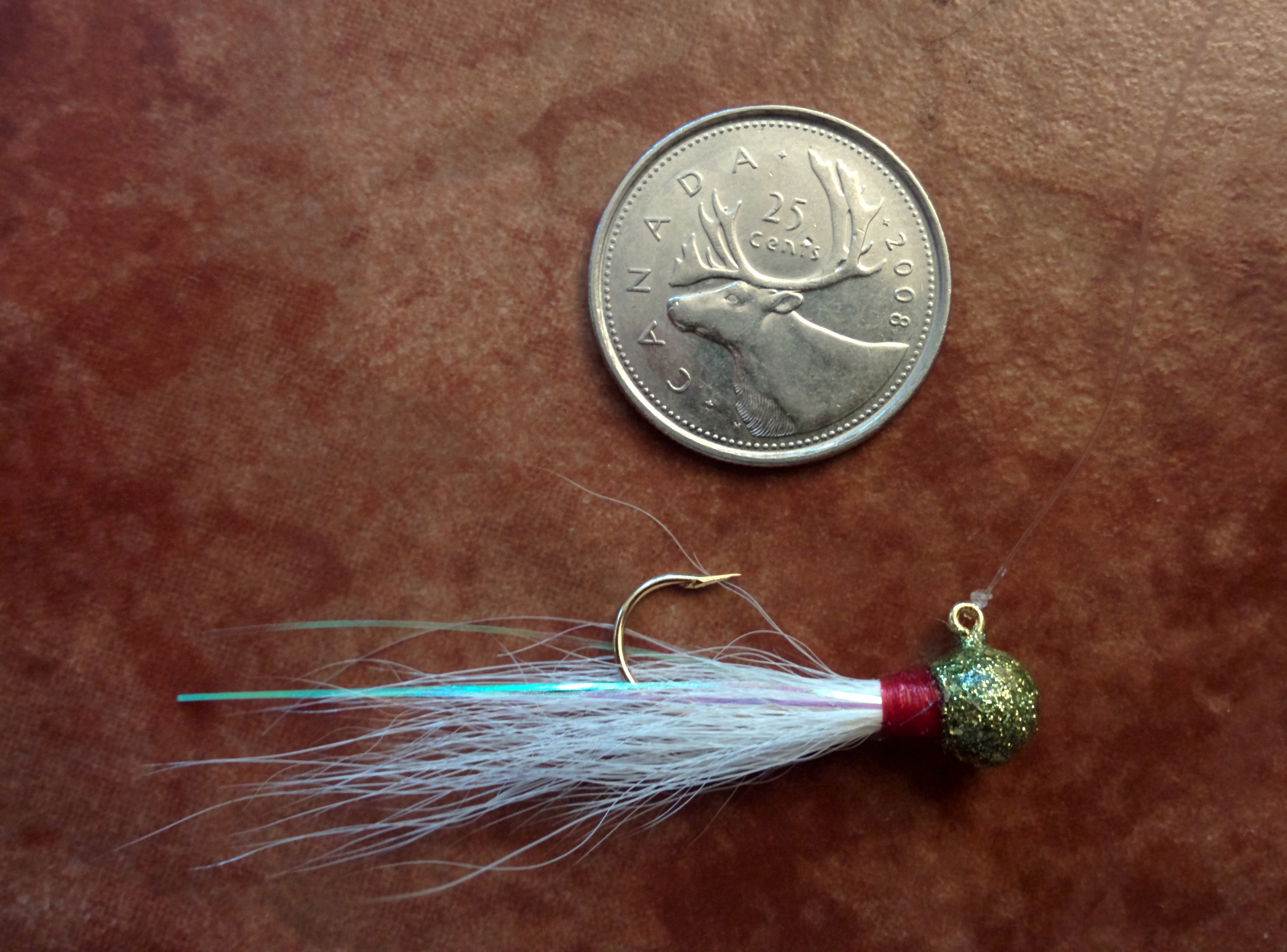
5 thoughts on “How to Fish A Bucktail Jig for Winter Flounder.”